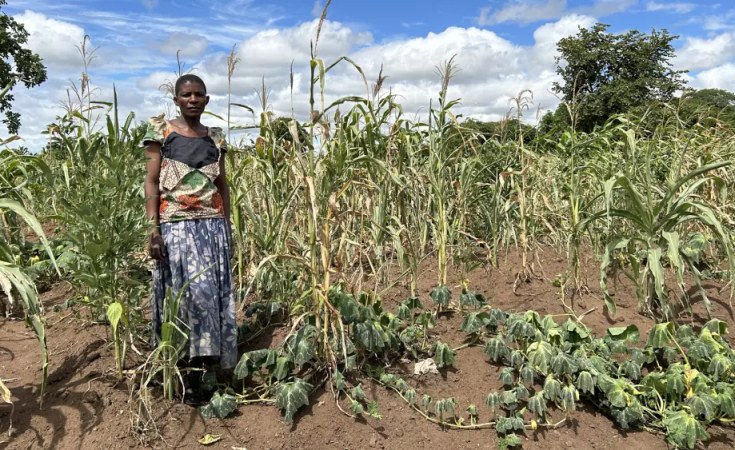THE El Nino-induced drought has left 7.7 million Zimbabweans in dire need of food assistance, amid revelations an additional 4.5 million children would require meals in schools to avert a humanitarian catastrophe.
According to the Zimbabwe Livelihoods Assessment Committee (ZimLAC) Report tabled before Cabinet this Tuesday, 1.7 million people who stay in urban areas will require assistance while a total of 7.7 million people, 51% of the population will require food assistance. This excludes a further 4.5 million who would require school meals.
Addressing journalists in Harare during a post-Cabinet briefing, Information Minister Jenfan Muswere said an update on the 2023/2024 Summer Crop Marketing, Food Security Outlook to March 2025 and Winter Cereals Production Plan for 2024, as presented by the Minister of Lands, Agriculture, Fisheries, Water and Rural Development, Anxious Masuka showed the vulnerability of half of the country's population.
"The Rapid Village-based Food Assessment concluded on 15 April 2024 established that 6 million people in rural areas will require assistance between May 2024 and March 2025.
"The ZimLAC Report indicated that 1.7 million people who reside in urban areas will require assistance. A total of 7.7 million people, being 51% of the population will require food assistance. This excludes a further 4.5 million who would require school meals," said Muswere.
The grain stock at the Grain Marketing Board (GMB) as of 9 May 2024 reportedly stands at 423 779 metric tonnes. The private sector is expected to import all the stockfeed requirements of 400 000 metric tonnes, and urban maize requirements of up to 450 000 metric tonnes by March 2025.
Muswere highlighted that the private sector can import 1 000 000 metric tonnes to mitigate the effect of the drought.
The 2024 ZimLAC Urban Livelihoods and Nutrition Assessments were conducted to estimate the urban population that is likely to be food insecure, their geographic distribution and the severity of their food insecurity.
It was also done to assess the status of nutrition among the urban population to facilitate evidence-based decision-making and programming for better nutrition outcomes; and to determine access to basic services namely, education, health, water, sanitation and hygiene; sources of income, expenditure patterns, food consumption patterns and consumption coping strategies.
"The assessment established that 65% of urban households are food secure, while 35% are food insecure. The proportion of food insecure households translates to 1 732 770 people.
"The main youth development challenges reported by surveyed households are unemployment; drug and substance abuse; and early marriages. The surveyed youths indicated that their priorities are job creation; income-generating activities; vocational training or skills development; and start-up capital or loans," said Muswere.
Regarding the Urban Nutrition Assessment, the minister said the findings were that the household Dietary Diversity Score is high across the provinces, with 79% of households at the national level consuming five or more food groups. An estimated 71% of urban households consume acceptable diets which include meat, fish, and eggs complemented by other foods such as pulses, fruits and milk.
On the Second Round Crops, Livestock and Fisheries Assessment Report, the findings confirmed that both agricultural production and productivity for the 2023/2024 agricultural season were severely and negatively impacted by the El Nino-induced drought.
"The whole of the Southern African region experienced an El Nino season, although Zimbabwe seemed to be the epicentre for the phenomenon.
"In anticipation of the severity of the impact of the El Nino phenomenon and the consequent reduction in the volume of cereals produced to feed the nation, President Emmerson Mnangagwa declared a State of Disaster on April 2, 2024."
Muswere reiterated that the government is working hard to ensure that no one will die of hunger while the nation focuses on enhancing its irrigation capacity.
"Going forward, Zimbabwe's food security thrust will centre on the reduction of reliance on rain-fed food production by strengthening initiatives such as climate-proofed agriculture, with a focus on conservation agriculture and expanding the area under irrigation," he said.
Regarding livestock, the impact of the El Nino-induced weather conditions on water supply and grazing availability for livestock resulted in the loss of 9 941 cattle at the beginning of the 2023/2024 season.
"The most affected districts are Tsholotsho and Binga of Matabeleland North province and Mangwe and Bulilima districts of Matabeleland South province. Forty-seven percent of the wards will face a critical grazing shortage from July 2024 onwards, while 12% are assured of adequate grazing to the next season.
"Government assures citizens that Zimbabwe will emerge from this drought stronger, more united, more resilient, better organised, better coordinated, and better capable of withstanding similar shocks in future.
"A comprehensive report on drought strategies and measures is now available and will shape interventions going forward," said the information minister.


